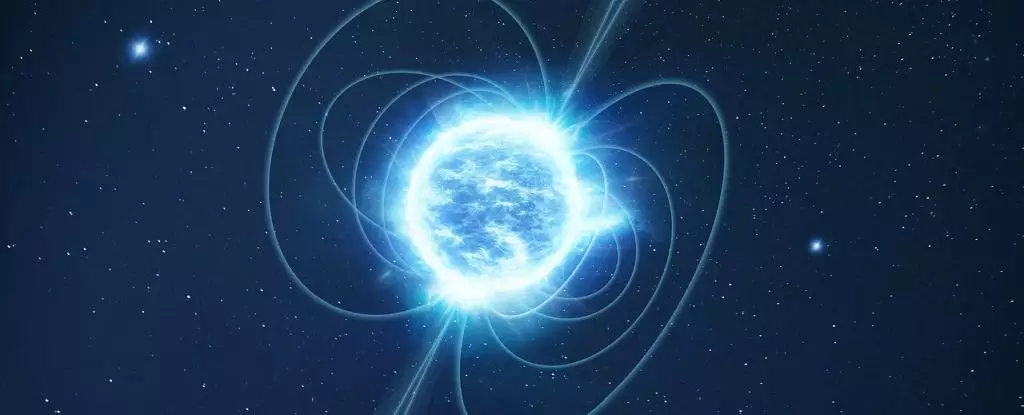In the sprawling vastness of the Milky Way, each discovery can turn our understanding of the universe on its head. The recent observations of SGR 0501+4516, a magnetar located on the galaxy’s fringes, have thrown a wrench into the existing narratives of neutron star formation. Utilizing the advanced capabilities of the Hubble and Gaia telescopes, astronomers have uncovered insights that challenge long-held beliefs about the origin of these enigmatic celestial entities. This fresh perspective underscores the complexity of stellar evolution and the intricate processes that govern the formation of some of the universe’s most severe magnetic phenomena.
The Crux of Magnetars and Their Ignition
To comprehend the significance of SGR 0501+4516’s newfound standing in astrophysics, it is crucial to understand what magnetars are and how they differ from other neutron stars. Magnetars, a unique subclass of neutron stars, possess magnetic fields that dwarf those found in typical neutron stars. They are generally characterized by magnetic fields that exceed a thousand times the strength of ordinary neutron stars and quadrillions of times that of Earth’s magnetic field. Traditionally, these cosmic heavyweights were believed to originate from core-collapse supernovae—a violent and spectacular end of massive stars when they exhaust their nuclear fuel and succumb to gravitational collapse.
However, SGR 0501+4516 defies this conventional wisdom, suggesting that our understanding of stellar death and rebirth may require a significant overhaul. The assumption linking it to the nearby remnant of a supernova, HB9, was reasonable; however, the new data indicates that these two celestial objects are unlikely to share a birth story.
Reevaluating the Evidence: Moving Beyond Core-Collapse Models
The collaborative effort between the Hubble Space Telescope and Gaia, known for its capacity to produce detailed three-dimensional maps of the Milky Way, allowed researchers to establish the precise movement of SGR 0501+4516 across the sky. The surprising findings pointed out that the magnetar’s trajectory and velocity do not correlate with HB9, disassociating the two and implying a different genesis for SGR 0501+4516.
This contradicts previous models and could mean one of two transformative scenarios: either our notion that magnetars exist for only tens of thousands of years is flawed, or SGR 0501+4516 may not have been born from a core-collapse supernova at all. Instead, it opens the door for alternative theories regarding its formation, specifically the intriguing possibility of a merger event.
The Merger Scenario: An Alternative Birth of Magnetars
Astronomers speculate that SGR 0501+4516 might have stemmed from a merger, potentially involving two low-mass neutron stars or an interaction with a white dwarf. This alternative pathway paints a more complex picture of stellar evolution—one that acknowledges the interplay of various celestial objects and processes beyond the traditional binary of birth and death linked to supernovae.
The process involving white dwarfs is particularly fascinating. Under certain circumstances, a white dwarf may siphon excessive mass from a companion star, becoming unstable and leading to a scenario previously thought to culminate in an explosion. Yet, astronomer Andrew Levan proposes an intriguing twist: under specific conditions, a white dwarf can collapse into a neutron star rather than detonate, suggesting that even stars formed from less massive progenitors can potentially evolve into magnetars.
The Paradigm Shift in Astrophysics
These discoveries regarding SGR 0501+4516 not only illuminate its singular behavior but also beckon a fundamental reassessment of magnetar formation across the cosmos. With fewer than thirty known magnetars in the Milky Way, SGR 0501+4516 stands as a frontrunner in challenging established theories and advocating for more dynamic models of stellar life cycles.
The implications of this research extend beyond mere curiosity; they invoke a broader inquiry into how we classify stellar phenomena and the evolutionary paths that lead to extreme objects. As the methods and technologies to explore our universe advance, they reveal that even the oldest paradigms can crumble under the weight of new evidence, prompting us to rethink the very foundation upon which our understanding of celestial mechanics rests.
Engaging with the Unknown
As we venture deeper into the cosmic seas of uncertainty, it becomes evident that every stellar phenomenon, like SGR 0501+4516, carries the keys to understanding complex cosmic narratives. It exemplifies how each observation can unveil layers of historical information that hold the potential to reshape our knowledge about the universe. The journey of discovery, therefore, is as much about encountering the unknown as it is about confronting and challenging established ideas—a reminder that in astrophysics, the only constant is change.


Leave a Reply